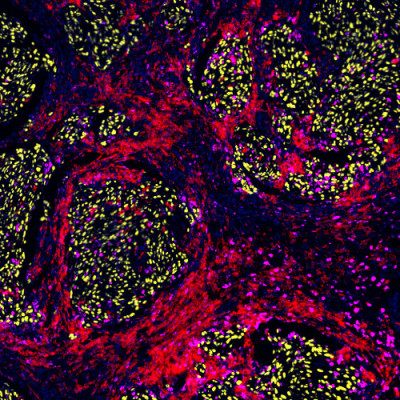
2023-03-14
Visited : 1183
Macrophages are highly specialised cells of the immune system that help the body detect and fight deadly pathogens. In particular, M1-like macrophages detect and destroy tumour cells, and release protective chemokines such as interleukin (IL)-6 and tumour-necrosis factor α (TNF α), thus shielding the body from life-threatening pathologies like cancer. However, not all macrophages show anti-tumour potential.
Certain types of macrophages, i.e., M2-like macrophages, promote tumour growth. Luckily, the desired macrophage phenotype—a set of traits resulting from the genetic makeup of the macrophage—can be activated by modulating the physiological microenvironment of the cells. Interestingly, multiple nanomaterial-based immunomodulators have been developed in the past, which are known to facilitate the phenotype transition of macrophages from M0 to M1.
Recently, a team of researchers led by Dr. Na Kong and Dr. Yuan Yao from the ShanghaiTech University, China, conducted a study to design novel immunomodulators—biomimetic polypeptides (BMPPs)—that could activate tumour-infiltrating macrophages, i.e., M1-like macrophages. Their study was published on 4 January 2023 in volume 5 of BioDesign Research.
Elaborating on the development of BMPPs, Dr. Yao remarks, “Combining de novo protein design and biosynthesis techniques, we designed a BMPP self-assembled nano-immunomodulator to trigger the activation of a specific macrophage phenotype. It was intended to be made up of (GGSGGPGGGPASAAANSASRATSNSP)n, the RGD motif from collagen, and the IKVAV motif from laminin.”
It is important to note, that previously developed nano-immunomodulators exhibited clear limitations, such as biotoxicity and low biocompatibility.
To overcome such limitations, Dr. Yao and team tried a unique approach. They designed and biosynthesised a biomimetic nanofibril—a highly ordered and stable structure comprising self-assembled repetitive building blocks. To do so, they validated the predicted monomers and higher-order complexes using molecular dynamics simulations—computational studies used to mimic the movement of atoms, molecules, or even large biomolecules such as polypeptides and proteins. The resultant BMPPs specifically harboured the RGD and IKVAV motifs—small nature-conserved regions from proteins—because prior studies have shown that these motifs contain amino acid residues with putative immunomodulatory capabilities.
Following biosynthesis, the team conducted a variety of assays including an enzyme-linked immunosorbent assay (ELISA), to test the efficacy of the newly biosynthesized BMPPs. Cell proliferation assays conducted using RAW264.7 cells demonstrated the general biosafety and cytocompatibility of BMPPs. Moreover, results from ELISA revealed that BMPP nano-immunomodulators increased the protein expression levels of IL-6 and TNFα, without affecting the expression levels of IL-10. This clearly demonstrated that M1 macrophage polarisation occurred at high BMPP concentrations and that BMPP nano-immunomodulators were presumably activating the M1-like macrophages.
How have these findings contributed to the long-term goals of the research team? “Unlike metal or synthetic polymer-based nanoparticles, these BMPPs exhibit excellent biocompatibility, high efficacy, and precise tunability in immunomodulatory effectiveness. With such encouraging findings, we are motivated to continue our research into cancer immunotherapy applications,” muses a hopeful Dr. Yao.
Reprogramming the tumour microenvironment by activating M1-like macrophages is an excellent way to boost tumour immunotherapy. Kudos to the research team for drawing inspiration from nature and for adding a potent weapon to our cancer-fighting arsenal.
Read the original article on ecancer.